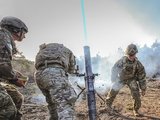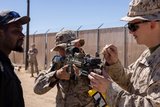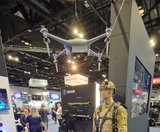US and South Korea train together in North Korean threat readiness
A pier damage repair exercise from Ulchi Freedom Shield 2023. (Photo: US Navy/Construction Electrician 3rd Class Dameya King)
The US and South Korea will begin an annual set of joint military exercises in August 2024. This year’s Ulchi Freedom Shield exercises are training missions geared towards tackling the potential of North Korean aggression.
North Korea has been a significant nuclear power since the 1980s, and has used its nuclear capabilities to rattle its sabre repeatedly over the intervening decades. It has threatened the US with the idea that it possesses long-range nuclear weapons that could reach US shores, and has regularly threatened military action against South Korea in response to what it calls “any provocation”.
South Korea has long known of the danger of aggression from North Korea. In June, 2024, it took possession of the first of six new P-8 MPA aircraft from Boeing to replace its ageing P-3C Orion fleet. In recent months, it has also observed an evolution of alleged medieval siege warfare practice, with North Korea sending hundreds of balloons over its border, weighted with rubbish to be dropped on its neighbour.
But this year’s collaboration on military training between the US and South Korea has been informed more by modern global geopolitics and by a potential emboldening of Pyongyang by other nuclear allies, notably Russia.
North Korean leader Kim Jong Un has recently used Russia’s war on Ukraine as an excuse to accelerate the country’s weapons development programme, while continuing to threaten nuclear conflict with both the US and South Korea.
The training exercises are unlikely to go entirely peaceably. 2023’s Ulchi Freedom Shield exercises were met with a so-called “scorched-earth” exercise by North Korea, including ballistic missile tests that imitated a devastating attack on its southern neighbour.
In fact, North Korea has already begun protesting against the collaborative training exercises, describing them as “invasion practice” on behalf of the countries it claims intend to conquer it. It made similar accusations over South Korea’s new deterrence guidelines in July, 2024.
The Ulchi Freedom Shield exercise, scheduled to run between August 19-29, will actually focus on enhancing response readiness to a range of North Korean threats, including computer-simulated exercises on dangers such as missile strikes, GPS jamming and cyberattacks, as well as the standard field manoeuvres and live-fire exercises of previous Ulchi Freedom Shield training sessions.
While no details of the number of US personnel involved in this year’s Ulchi Freedom Shield training have been released, Lee Sung Joon, a spokesperson for South Korea’s Joint Chiefs of Staff, said around 19,000 South Korean troops would participate in the drills.
Related Programmes in Defence Insight
More from Training
-
![Cubic tailors mortar simulator for the US Army]()
Cubic tailors mortar simulator for the US Army
The company’s mortar trainer received improvements based on soldier’s feedback.
-
![Saab expands footprint in the US]()
Saab expands footprint in the US
The company will operate in two new locations in the coming years to better support US services.
-
![How terrain management capabilities can improve military training]()
How terrain management capabilities can improve military training
This type of tool provides more realistic training easing the incorporation of new scenarios that accurately represent the threats of the battlefield.
-
![I/ITSEC 2024: Australian Army approaches second phase of countermining training]()
I/ITSEC 2024: Australian Army approaches second phase of countermining training
The Engineering Corps has been conducting individual instruction using FLAIM Systems’ Sweeper and should start collective deployments in 2025.
-
![I/ITSEC 2024: Zeiss introduces Velvet 4K SIM projector for night flight simulation]()
I/ITSEC 2024: Zeiss introduces Velvet 4K SIM projector for night flight simulation
The next-generation platform is motion-compatible and can be used in OTW and NVG applications.
-
![I/ITSEC 2024: Saab introduces UAV live training capability]()
I/ITSEC 2024: Saab introduces UAV live training capability
The system can be used to prepare soldiers for both drone offensive operations and CUAS missions.

























